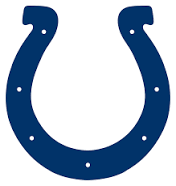San Francisco 49ers
- Paul Grange

- Sep 27
- 3 min read

Few teams in American sport are as famous or as iconic as the San Francisco 49ers. Not many other teams for that matter are also named in honour of a wave of migration. From the name to the badge, the Niners are a tribute to the California Gold Rush of 1849, when fortune-seekers from across the world poured into San Francisco Bay chasing dreams of sudden wealth. They became known as the “Forty-Niners,” and their grit, luck, and restless hunger gave the team its name.
The 49ers’ logo ties it all together. The bold red oval is encircled by a thin gold band, a quiet but deliberate nod to the metal that built San Francisco. Gold rush life was no fairytale. Most miners toiled in harsh, filthy conditions, battling hunger, disease, and lawlessness. Very few struck it rich. The real winners were the merchants and financiers: the shopkeepers, shipping agents, and bankers who sold picks, pans, and supplies at inflated prices. Levi Strauss, for instance, began selling tough denim trousers to miners; Wells Fargo grew from handling their money and deliveries.
And then there was coffee — liquid gold in the camps. Miners needed it strong and constant. In the 1850s, a young carpenter named James A. Folger arrived in San Francisco and went to work supplying coffee to miners. From those muddy camps, Folger built what would become Folgers Coffee, one of America’s best-known brands. The fact that a coffee empire sprang directly from the Gold Rush tells you everything about what truly endured from that era.
Denver’s basketball team, the Nuggets, nods to this same history of gold-seeking across the West. From California to Colorado, the dream of finding treasure shaped towns, states, and sporting identities.
The 49ers, though, carried that spirit into sport. Founded in 1946 and joining the NFL in 1949, they became the first major league professional sports team based in San Francisco. Their golden era came in the 1980s and 1990s under coach Bill Walsh, quarterback Joe Montana, and wide receiver Jerry Rice — names still whispered with awe in football circles. The team pioneered the “West Coast Offense,” won five Super Bowls (XVI, XIX, XXIII, XXIV, XXIX), and produced some of the NFL’s greatest moments, from “The Catch” in 1982 to Rice’s record-shattering career. More recently, they’ve added two NFC Championships in the 2010s, proving the dynasty spirit still runs in red and gold.
San Francisco itself has always been more than just a mining boomtown. Before the Gold Rush, the region was home to Ohlone and Coast Miwok peoples, who lived off the land and sea for thousands of years before Spanish colonisation. The Spanish built missions across California, with San Francisco’s Mission Dolores founded in 1776. After the Gold Rush transformed the city almost overnight, waves of immigrants from China, Europe, and Latin America gave San Francisco its famously diverse character. Earthquakes and fires repeatedly tested the city, but it rebuilt every time.
Today, San Francisco is a cultural powerhouse. From the beat poets of North Beach to the hippies of Haight-Ashbury, from financial giants to the tech revolution of nearby Silicon Valley, the city has always reinvented itself. The Golden Gate Bridge, the cable cars, and the fog all serve as enduring icons of a city that has never stopped dreaming.
The 49ers reflect that history. A team named for gold but built on resilience, a badge ringed with wealth yet carried by working-class loyalty, a franchise that became one of the NFL’s dynasties in the 1980s and still stands among the league’s greats. Like the city they represent, the Niners are at once tough, inventive, and proud of their heritage.
The Gold Rush dream still echoes every time the Niners take the field, clad in red and gold, chasing glory in a game that’s as unforgiving as the Sierra streams.







Comments